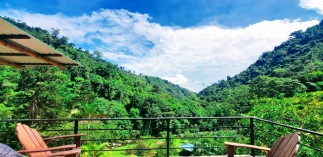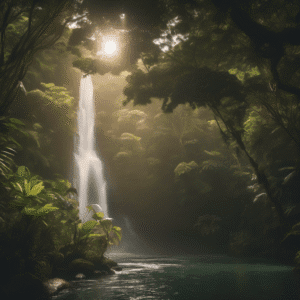High atop the rainforest canopy, a majestic creature circles on lazy thermals. Its black and white plumage flashes against the emerald canvas, its long, down-curved bill searching the wetlands below. This, my friends, is the Wood Stork, a magnificent visitor gracing Costa Rica’s skies during the wet season (May to November).
While the Wood Stork might not be a permanent resident, its presence is a cause for celebration. Let’s delve into the fascinating world of this feathered giant!
A Striking Beauty:
Imagine a bird standing over three feet tall, boasting a wingspan that could rival a small airplane. That’s the Wood Stork! Its snow-white body is a stark contrast to its jet-black flight feathers and tail. Adults have a bare, wrinkled head, a unique feature that gives them an almost prehistoric appearance. Juveniles, on the other hand, sport a fuzzier head and neck, adding a touch of cuteness to their impressive stature.
Masters of Marsh and Mangrove:
While you might spot a Wood Stork soaring over the mountains surrounding our Costa Rican retreat, their true domain lies in the wetlands. Freshwater marshes, shallow ponds, and mangrove forests are their hunting grounds. Here, they wade gracefully, their long legs a perfect adaptation for navigating these watery landscapes.
The Art of Feel-Feeding:
The Wood Stork is a master of a unique feeding technique called “tactile-feeding.” Their thick, curved bill acts like a living spoon. As they wade through the shallows, their bill dips and sweeps underwater, feeling for prey. When a tasty morsel – a fish, a frog, or an aquatic insect – brushes against their sensitive bill, they snap it shut with lightning speed.
Social Butterflies (Kinda):
Unlike their solitary cousins, herons and egrets, Wood Storks exhibit a somewhat social side. They often forage in loose groups, forming a line and wading in unison, creating a mesmerizing spectacle. They also nest colonially, building large stick nests high up in trees near water sources. Here, you might witness the heartwarming sight of parents diligently caring for their young.
A Glimpse of a Threatened Icon:
The Wood Stork, though a majestic sight, faces threats due to habitat loss and reduced water quality. Here at our Costa Rican retreat, we’re committed to sustainable practices that protect the delicate ecosystems these incredible birds call home. By supporting eco-conscious retreats like ours, you can contribute to the conservation of this feathered ambassador of the wetlands.
So, keep your eyes peeled during your Costa Rican adventure! You might just be lucky enough to spot the Wood Stork, a soaring sentinel reminding us of the beauty and fragility of our natural world.
For more information, please view our comprehensive guide about the birds of Costa Rica







